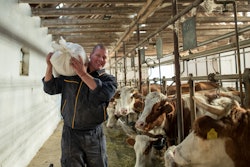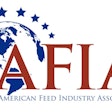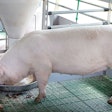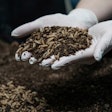
Novel enzymes could target Clostridium perfringens (08:42)
Ann Reus:Hello and welcome to the Feed Strategy podcast. I'm your host, Feed Strategy senior reporter Ann Reus.
Kane Miller is CEO ofAxitan, where he works with novel antibacterial enzymes known as endolysins, which his company has developed to targetClostridium perfringensand other pathogens. Miller will speak about this technology and how it could become an alternative to antibiotics at the 2023 Poultry Tech Summit. I recently spoke with him about his work. Here's our conversation.
Hi Kane, nice to have you on the podcast.
Kane Miller:Hi Ann. It's a pleasure to meet you. Thank you for inviting me to do this. I'm excited.
Reus:Yeah, so tell me what your talk at Poultry Tech Summit will be about.
Miller:So the talk will be about the work Axitan is doing with regard to the development of endolysins, which, for those of you don't know or are unfamiliar with it, endolysin is a type of enzyme. And our work is based on developing these enzymes that can essentially target and kill problematic bacteria. So, in our instance, we've developed them to be added to poultry feed to target problematic pathogens in poultry or problematic bacteria.
Reus:How did you come to start working with endolysins?
Miller:这是一个有趣的问题。所以,向end of my Ph.D., and then during my one-year postdoctoral work, which my Ph.D. was in biochemical engineering, and my main focus of research at the time was microalgae biotechnology, and I was aware of work being done on endolysins with human applications, both as antibiotic replacements, but also for topical applications in skincare. So I was aware of that research going on. And I found it really interesting, and the area of antibiotic replacements has always kind of been an interest of mine. And so I was aware of that going on and, kind of serendipitously or kind of around the same time, I was introduced to a leading figure within the poultry industry, who became a really close friend of mine, Stewart Ritchie, and we were discussing everything poultry. It was a new area to me, so it was very interesting and he essentially said, you know, a major issue in poultry production is the disease necrotic enteritis, which is caused by the pathogenClostridium perfringens. So, with that in mind, and as I started trying to understand how I could form a company, very early on, I wrote a grant in the U.K., an Innovate U.K. grant, which we were ultimately successful in winning, and that was based on an endolysin application forClostridium perfringens, which we were successful on and with that, and some seed investment money, we founded Axitan and we started working to develop an endolysin-based product for poultry production.
Reus:How do endolysins target necrotic enteritis?
Miller:So, they don't target necrotic enteritis, they targetClostridium perfringens, which is a causative agent of necrotic enteritis. So, what they do, or what the enzyme does, is that I guess it can be split up into two functions. One function of the endolysin is that it binds, and it specifically binds, to the cell wall of the target pathogen you're looking to address. So in our case, it specifically binds toClostridium perfringensand doesn't bind to other pathogens. And then with its catalytic function, or its cutting function, it will cut to certain bonds within the peptidoglycan layer of the cell. And if you imagine, essentially, a balloon, and you may be able to do tiny little holes in it, but essentially, if you do enough holes, the internal pressure of the cell or balloon will overcome the strength of the cell wall and it will cause it to pop. So that's exactly what they do. They bind and cut toClostridium perfringens,causing them to pop. So we do a lot of that work and that type of characterization of vendor license in our lab in the U.K.
Reus:Interesting. Can endolysins completely replace antibiotics to target necrotic enteritis?
Miller:这是一个有趣的问题。I think for any product to replace antibiotics, it really needs to do two things. It needs to act as an insurance policy, I guess, in the event that there's an outbreak of a disease. And so in this instance, if you're able to keepClostridium perfringens在低水平环境中,然后将help. But also, I guess antibiotics weren't just about mitigating diseases. Antibiotics historically have also had quite a profound impact on performance of boilers or just livestock in general. So what we are looking to do with this product is to add additional formulatory components to the endolysins so that it can both minimize the incidence ofClostridium perfringensand also perhaps provide an economic uplift to the end user. And this formulation with endolysins is what we call FORC3.
Reus:You mentioned livestock there. Can this work be translated into any other diseases or species?
Miller:We think so, yeah, a lot of what we do is, is about essentially finding problematic bacteria, both gram negative and gram positive, and looking to see if we can engineer solutions to them. So fundamentally, we like to seek work with industry, and that's a very important thing that we do and try and have as many conversations with people in the industry as possible to understand what their issues are, to understand if they're problematic pathogens that we can address, and then seek to develop a product, an endolysin-based product to address them. So we think it has quite wide-ranging applications beyond poultry.
Reus:Have you attended Poultry Tech Summit before, and what do you hope to get out of it this year?
Miller:No, this will be my first time and I'm very much looking forward to it. So I think an important thing for people like me, who have spent the early part of their career in academia, and then in a lab-based company, is the outreach. And we've learned along the way that it's best not to develop products in a bubble, it's best to develop products with the inputs of industry. And having those conversations with end users or industry experts really helps you refine your product offering and make sure that what you're offering, there's a market for and, I think, at Poultry Tech Summit and other conferences, being able to speak to many people in a short amount of time is a very efficient way to do it. So I'm very much looking forward to it.
Reus:Yeah, sounds like you'll be in the right place. Well, thank you so much for talking to me. This was a really interesting topic.
Miller:Oh, great. Thank you so much.
Reus:Poultry Tech Summit, scheduled for November 6-8 at the Hilton Atlanta Airport in Atlanta, Georgia, will focus on the transition of innovative technologies into commercial applications to advance the poultry industry.
Registration is now open atwattglobalmedia.com. You can find a link to the registration page on our website atFeedStrategy.comorWATTAgNet.com. Early bird savings are available until September 29.
Thanks for listening. I'm Ann Reus for Feed Strategy.





















